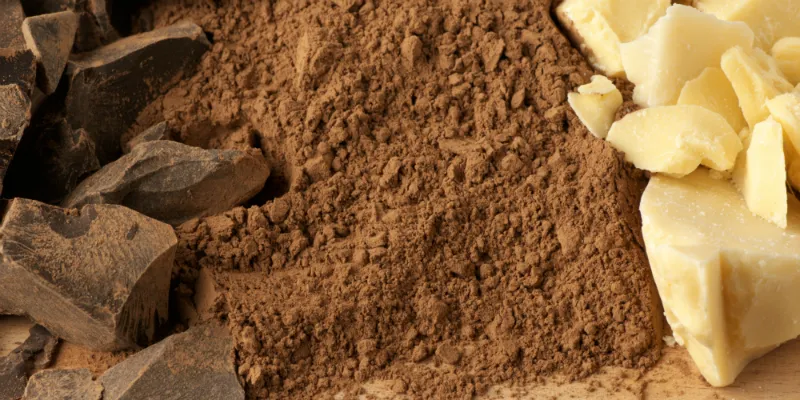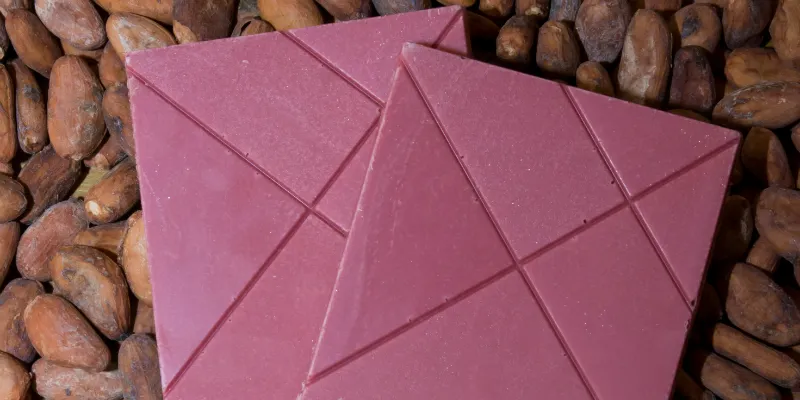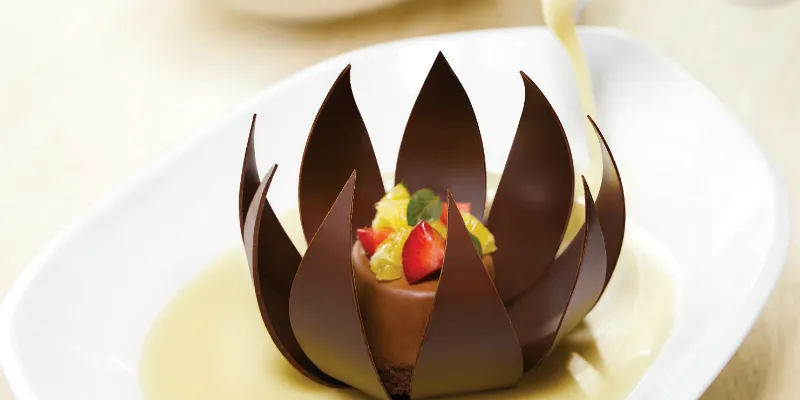From Ruby chocolate to Sao Tome cocoa and Madagascar beans: Learnings from a chocolate workshop
Have you ever wondered what goes into the making of luxury chocolate? Here’s what we learnt during an exclusive master class, organised by the Master Chocolatiers of Fabelle
There are two kinds of people in this world, those who love chocolate and those who love chocolate. Those who claim to not like chocolate probably haven’t tasted good chocolate. At some point all of us have searched the web on the history of chocolate and found out how the cocoa bean was discovered, and how it changed the world overnight! So, I’m not going to go into these details again. Instead, I’m going to tell about the beauty of creating that perfect piece of chocolate that melts into your mouth and transports you to ecstasy in a matter of minutes.

Chef Yogen Datta, Executive Chef, Fabelle Exclusive Chocolates
Last weekend, I attended a luxury chocolate making master class, organised by the Master Chocolatiers of Fabelle by ITC. The chocolatiers taught the class the process from cocoa bean to chocolate bar, making pralines and ganache and pairing chocolates. Luxury chocolate is making waves in India, but the market is still young. What is interesting is to understand how luxury chocolates are prepared, what makes them different from the regular chocolates sold off the rack, and how to indulge in a unique sensorial experience.
Also read: Going retro: Try heritage foods this summer
Bean to bar
The chef kickstarted the class by telling us how the process of making chocolate from cocoa was done. That chocolate bar that I usually munch within five minutes, takes months of processing, techniques, secret formulae, expert tastings and curation.
Cocoa cultivation, the chef tells us, requires hot and humid climatic conditions primarily found in regions near the equator and thus cocoa is grown most abundantly in Madagascar, Ecuador, Venezuela, Sao Tome, and Ivory Coast among other countries. So, while Swiss chocolates are popular worldwide, little did I find out that no cocoa trees are actually grown in Switzerland!
To put it in a nutshell, plucked from trees, cocoa beans are fermented, sun-dried, roasted and finally crushed to form tiny pieces of cocoa nibs. These little nibs that melted effortlessly in my mouth were pure unadulterated chocolate! The nibs are further processed to make cocoa mass. The cocoa mass is exported from these regions to vendors across the world, who use it to produce chocolate.

The cocoa mass is made of cocoa solids and cocoa butter
The cocoa mass is made up of cocoa solids and cocoa butter. The chef then told us about the most important process in chocolate making - conching.
The chef explains how chocolate, sugar and milk are put in a special agitator to blend and grind the mixture well, the technique is unique to each chocolate maker and it is here that the secret formula is added to create chocolate. The duration of conching helps enhance the flavours of the chocolate (longer the better).
Luxury chocolate makers, such as Fabelle, conch their chocolates for hours to deliver a unique textural variation that appeal to the taste palate of evolved chocolate connoisseurs.
The chefs also demonstrated chocolate tempering, which, apart from being mouth-watering, stabilises chocolate so that it can be molded to prepare pralines and other chocolates.
Also read: In search of the perfect brew: Susmita Das Gupta's tea journey from Bengal to Bengaluru
How to pair chocolates with unique flavours
The best part of the class (apart from tasting) was learning about the pairings. Every cocoa bean has a distinct note that’s local to its source. Chocolatiers use these distinctive notes to pair with various flavours to create delicious chocolates.

Luxury chocolates are evolving in flavour and texture
“Each chocolate has its own flavour and contrasting texture and taste works well when it comes to pairings. The perfect chocolate pairing is one where the flavours do not overpower each other, rather complement each other,” says Executive Chef, Yogen Datta, Fabelle Exclusive Chocolates.
I was curious to know more about these flavours. Madagascar cocoa bean has a berry-citrusy taste, Ecuador cocoa contains banana notes, Venezuela cocoa has a nutty flavour and cocoa from Sao Tome has woody notes. With their years of experiences and experiments, luxury chocolate makers prepare unusual chocolate pairings from these flavours. Spices are combined with Sao Tome cocoa as it pairs well with the woody notes of the cocoa. As the consumer’s palette evolves, they like to experiment with creations that have unusual pairings.
“Our understanding of unusual pairing is when ingredients like berries, spices and salt accentuate the taste of the chocolate. Cinnamon, chilly, strawberry and cilantro are some popular contrasting flavours with chocolate that go well with the Indian palette and have been well-received,” says Chef Yogen.
What are dark, milk and white chocolates?

Each chocolate bar is made with a unique recipe and with precision
White, milk and dark chocolates have divided the loyalty of chocolate lovers for decades and it was fascinating to know what technically made each one different from the other.
A bar of chocolate is made up of cocoa solids+cocoa butter+sugar+milk solids.
· Dark chocolate is cocoa solids+cocoa butter+sugar
· Milk chocolate is cocoa solids+cocoa butter+sugar+milk solids
· White chocolate is cocoa butter+sugar+milk solids.
Interestingly, white chocolate contains no cocoa solids. The next time someone claims to be a chocolate lover and calls white chocolate their favourite, let them know it isn’t exactly chocolate!
And now, here’s Ruby chocolate
Until now milk, dark and white chocolates dominated the chocolate world, till recently a fourth kind was discovered- Ruby chocolate.

Ruby chocolate is the next big thing
“Ruby has been a path breaking discovery, created 80 years after the launch of White chocolates as the third type of chocolate besides Dark and Milk chocolate. It is the fourth type of chocolate and is made from the ruby cocoa bean.
Ruby chocolate is attained by selecting the right cocoa beans and using a unique processing technique, which unlocks the natural ruby colour and flavour. It has a distinct berry-fruitiness and luscious smoothness,” explains Chef Yogen.
I got the chance to try out this naturally pink delight, it tasted sweet at first but soon a tinge of sourness hit the tongue. At that moment, I knew it was going to be my new favourite chocolate from now on!
Have you been eating something else in the name of chocolate?
The session opened my eyes to learning a big truth about the chocolates I have been consuming for years.
Did you know that the compound chocolate slabs that most home-bakers buy to make chocolates is not true chocolate? While I always thought expensive chocolates were luxury, the chef had some news for me. Two words: Couveture and Compound chocolate
Couveture is a high quality chocolate containing cocoa butter and cocoa solids; it is used by Chocolatiers to prepare true chocolate. Compound chocolate is a low-cost alternative to true chocolate containing vegetable oil instead of cocoa butter, thus making it cheaper.
Compound chocolate is sold popularly by Morde brand in India. Next time you buy a chocolate bar off-the-rack read the ingredients, also notice that when the bar melts, it becomes rubbery, experts do not advise to use compound chocolates for making chocolates. On the other hand, couverture gives the chocolate firm "snap" when broken, a creamy flavor and most importantly the chocolate melts lusciously.
Luxury chocolates in India
The term ‘Luxury’ is in the midst of a metamorphosis. The change in consumer behaviour and demands over the years have redefined the way we understand what ‘Luxury’ is today.
“‘Luxury chocolates’ generally connotes a grade of chocolates that offer an indulgent and unique sensorial experience. What makes it different from a regular chocolate is driven by many factors among which authenticity of ingredients plays a vital role. In every luxury product there has to be a relevant element that consumers see value in investing. These luxury chocolates attributes are enlivened through the master chocolatier’s expertise.” says Anuj Rustagi, Chief Operating Officer - Chocolates, Coffee and New Categories - Food Division, ITC Limited.

A chocolate flower
Anuj explains how luxury chocolate brands source cocoa from the best cocoa growing countries in the world; the supply chain from the manufacturing facility to the destination is maintained using the most temperature-controlled supply chain as it affects the authenticity of the product. The Indian chocolate market is upwards of Rs. 10,000 crore and is amongst the top five packaged food categories in the country.
“The Luxury chocolates market is evolving at a rapid pace and is becoming a category of choice for the upper middle-class segment. However, overall this category is at a nascent stage but with a lot of potential to grow in the future, given the increasing disposable incomes.” explains Anuj.
Also read: It is a plate full of stories at the Hungry Travellers Cafe







